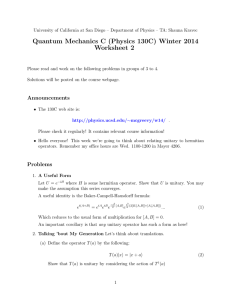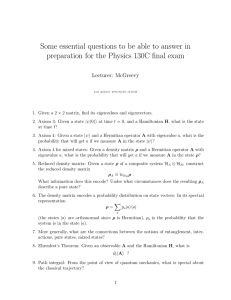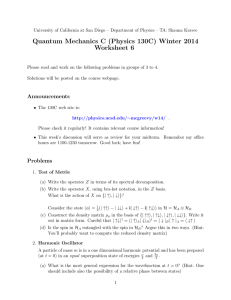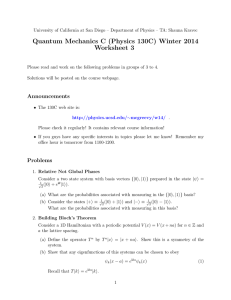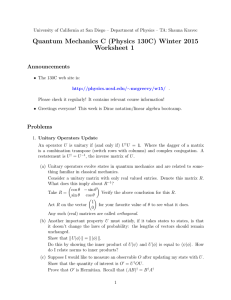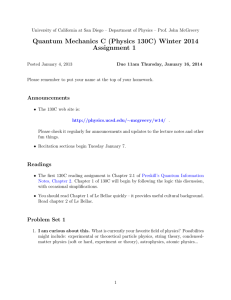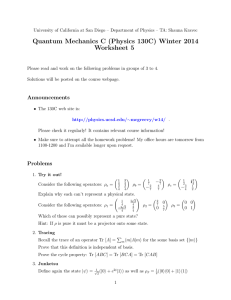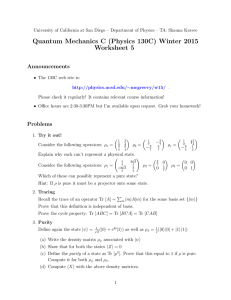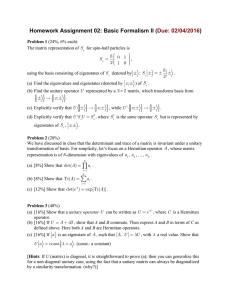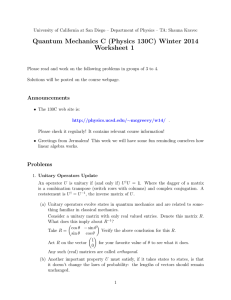Quantum Mechanics C (Physics 130C) Winter 2015 Worksheet 2 Announcements
advertisement
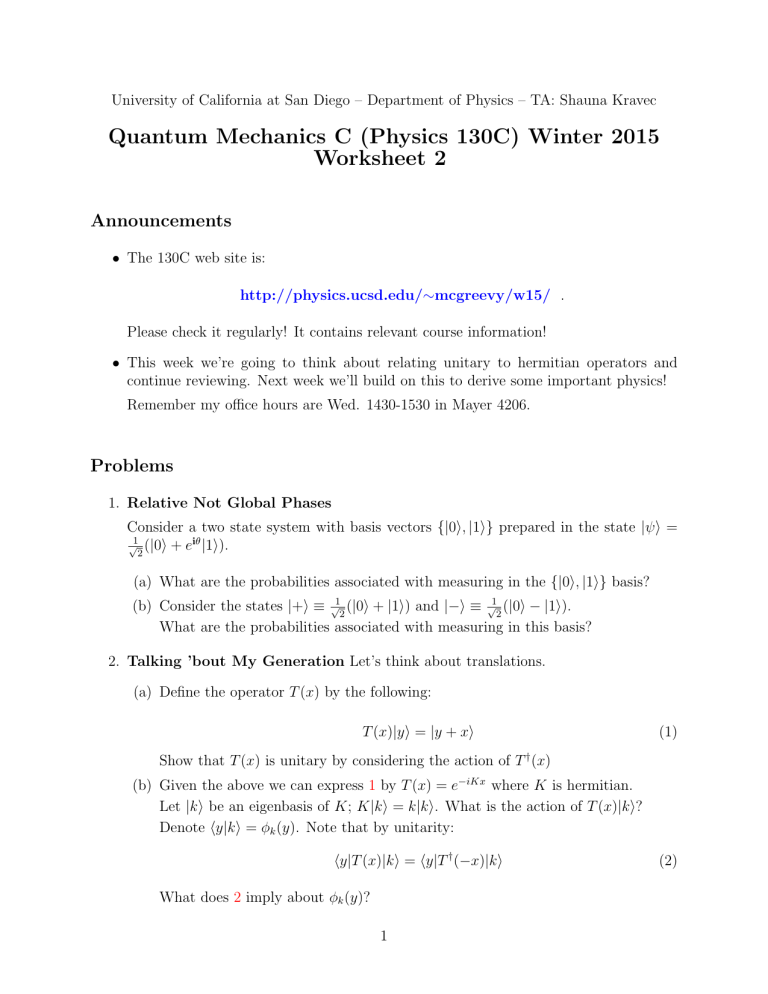
University of California at San Diego – Department of Physics – TA: Shauna Kravec
Quantum Mechanics C (Physics 130C) Winter 2015
Worksheet 2
Announcements
• The 130C web site is:
http://physics.ucsd.edu/∼mcgreevy/w15/ .
Please check it regularly! It contains relevant course information!
• This week we’re going to think about relating unitary to hermitian operators and
continue reviewing. Next week we’ll build on this to derive some important physics!
Remember my office hours are Wed. 1430-1530 in Mayer 4206.
Problems
1. Relative Not Global Phases
Consider a two state system with basis vectors {|0i, |1i} prepared in the state |ψi =
√1 (|0i + eiθ |1i).
2
(a) What are the probabilities associated with measuring in the {|0i, |1i} basis?
(b) Consider the states |+i ≡ √12 (|0i + |1i) and |−i ≡ √12 (|0i − |1i).
What are the probabilities associated with measuring in this basis?
2. Talking ’bout My Generation Let’s think about translations.
(a) Define the operator T (x) by the following:
T (x)|yi = |y + xi
(1)
Show that T (x) is unitary by considering the action of T † (x)
(b) Given the above we can express 1 by T (x) = e−iKx where K is hermitian.
Let |ki be an eigenbasis of K; K|ki = k|ki. What is the action of T (x)|ki?
Denote hy|ki = φk (y). Note that by unitarity:
hy|T (x)|ki = hy|T † (−x)|ki
What does 2 imply about φk (y)?
1
(2)
(c) Recall plane waves have momentum related to their de Broglie wavelength: p = ~k
Rewrite T (x) with the implied expression for the operator P . This is why we say
momentum generates translations!
∂
T (x) = − ~i P T (x)
We can use a clever trick to get P on its own: ∂x
Write an expression for hx0 |P |xi Hint: Derivative of a delta function
Recall that by some integration by parts:
Z
Z
0
dxδ (x − y)f (x) = 0 − dxδ(x − y)f 0 (x) = −f 0 (y)
(3)
Use 3 to derive the familiar expression for P by considering:
P ψ(x) = hx|P |ψi
2
(4)
